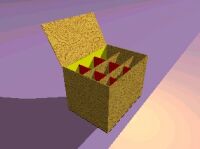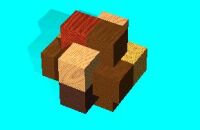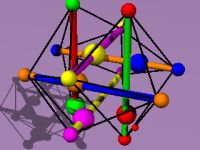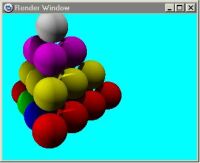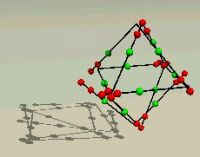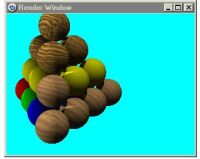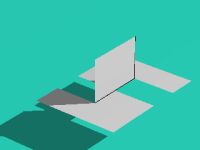|
|
|
|
|
|
|
| . . Homepage. . . . What We've Been Up To. . . . About Me & Al. . . . Teddington. . . . Pictures. . . . Puzzles. . . . Puzzles Too. . . . Music. . . . Misc. . . . My Films. . . . Credits etc. . |
|
||||
|
|
||||
|
POV-Ray is a totally free software application which allows you to generate computer images of objects. It is available from www.povray.org. What you can do with it is limited only by your imagination. Here are some of my earliest images. At the bottom of this page I include the code for generating the wine crate, once my most complex image to date, now superseded by the child's toy, (bottom left) which I think is superb, looking almost real. Perhaps I will create an image of a trumpet...
Basically, you specify a camera position and direction, lighting effects, and then code to generate the components of the image. I will be using it for creating puzzle prototypes without having to do any wood- or craftwork. It has a steep learning curve, but it's great fun, and produces fascinating results. Just changing the camera co-ordinates means that you can see your object from a different angle. Above right, row one, is my first attempt at creating a computer image of a six piece burr puzzle. It is 'made' from six different types of wood.
The image above, Irina's Puzzle, is made by defining a single L-shaped wire piece, with 2 red balls at each end, and a green ball near the centre of each arm. I then replicated that piece 5 more times, and positioned each piece appropriately by rotating in three planes! The pile of balls below is created by defining the 3D co-ordinates of each ball, along with the radius. I then specified that some have colour while others have wood texture. Above, top right, you can see my impression of a cube designed by Frank Potts, puzzle collector and proprietor of Potty Puzzles. Depending on which face you look at, it always shows one of my initials, MHW.
Above you can see a set of pentominoes I designed with 'aluminium' spheres instead of the more usual wooden cubes. Top right is my computer-generated version of a well-known 'impossible object' which can actually be made from a single sheet of paper. The Persistence of Vision Ray-Tracer creates three-dimensional, photorealistic images using a rendering technique called ray-tracing. It reads in a text file containing information describing the objects and lighting in a scene and generates an image of that scene from the view point of a camera also described in the text file. Ray-tracing is not a fast process by any means, but it produces very high quality images with realistic reflections, shading, perspective and other effects. (Extracted from user documentation).
|
|
|
| [Homepage] [What We've Been Up To] [About Me & Al] [Teddington] [Pictures] [Puzzles] [Puzzles Too] [Conversion Kits] [Classics] [Modern Classics] [Desert Island Puzzles] [Coffee Table Puzzles] [Influences] [POV-Ray] [Tetrominoes] [Rec Maths] [Sale & Trade] [Free Puzzles] [Architectural Impossibilities] [Music] [Misc] [My Films] [Credits etc] |
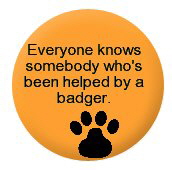 |
|
|
|
